How we test mattresses
A complete guide to our new methodology and scoring system
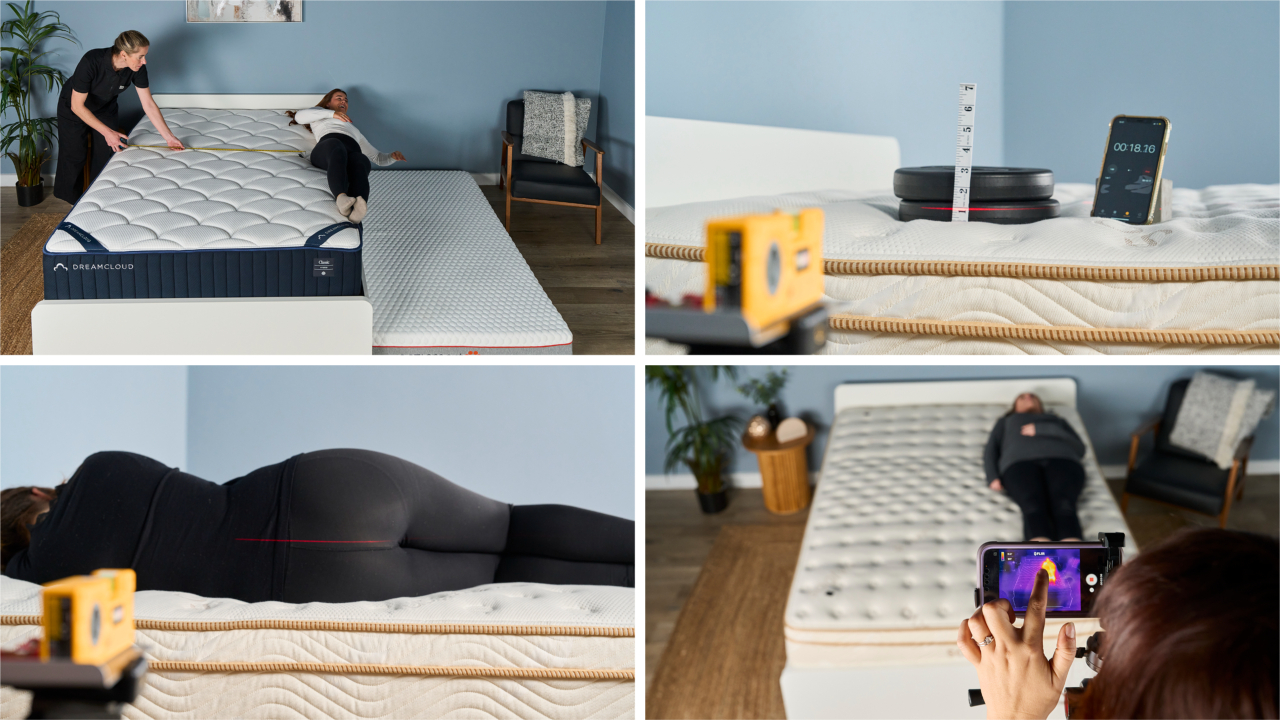
Welcome to our brand-new mattress methodology. Here you’ll find everything you need to know about how we test and score mattresses at Tom's Guide.
Our methodology is anchored by seven robust tests designed to capture objective, verifiable lab data on the four most critical performance areas of a mattress: pressure relief, temperature regulation, motion isolation and edge support.
We class them as of critical importance because together they have the biggest impact on your sleep comfort.
We've also devised a new series of surveys to get granular subjective feedback from our panel of expert testers on each mattress they review. This feedback is vital because it tells us what the data can't – what each mattress actually feels like to sleep on in real-life.
In addition, we've devised a new scoring rubric to assess value for money on multiple levels, because getting a good mattress at a good price is important to all of us.
Once all of that information is recorded, verified and analyzed, we use it to score each mattress out of 5. Those overall scores inform our product rankings and our recommendations for the best mattresses to buy in 2025.
Here's an in-depth look at our full mattress testing process...
How we rate the firmness of a mattress
Mattress firmness is typically measured on a scale from 1 (softest) to 10 (firmest). However, there isn't a universally accepted measurement for firmness, and a firm mattress from one manufacturer won't necessarily feel the same as a firm mattress from another.
We use our own 10-point scale to measure firmness, and we compare our findings to the manufacturer's classification to give you a better indication of how firm you may find a mattress.
Firmness | Feel | Description |
|---|---|---|
1 | Extra soft | Deep sinkage, body-contouring, and pressure relief; less support. |
2-3 | Soft | Considerable sinkage and body-contouring; some support. |
4 | Medium soft | Some sinkage and close body-contouring; moderate support. |
5 | Medium | Less sinkage, but moderate body-contouring and support. |
6-7 | Medium firm | Good balance of contouring, comfort and support; more bouyant. |
8-9 | Firm | Lots of support and almost no sinkage; very little body contouring. |
10 | Extra firm | Virtually no sinkage or body contouring. |
How we test pressure relief
A mattress with good pressure relief distributes your weight evenly and contours your body to prevent pressure points from forming. It's one of the crowning features of the Saatva Classic (see our Saatva Classic mattress review for the test results), the top-rated option in our best hybrid mattress guide.
Pressure relief is directly tied to how comfortable you'll feel when sleeping on a mattress, and the amount of pressure relief you'll feel depends on your body weight, sleeping position, and the type of mattress you're lying on.
Spinal support is the other vital part of pressure relief – a mattress that keeps your spine aligned when you're lying down is crucial for preventing tension in your lower back. That's why our new pressure relief tests include spinal alignment analysis.
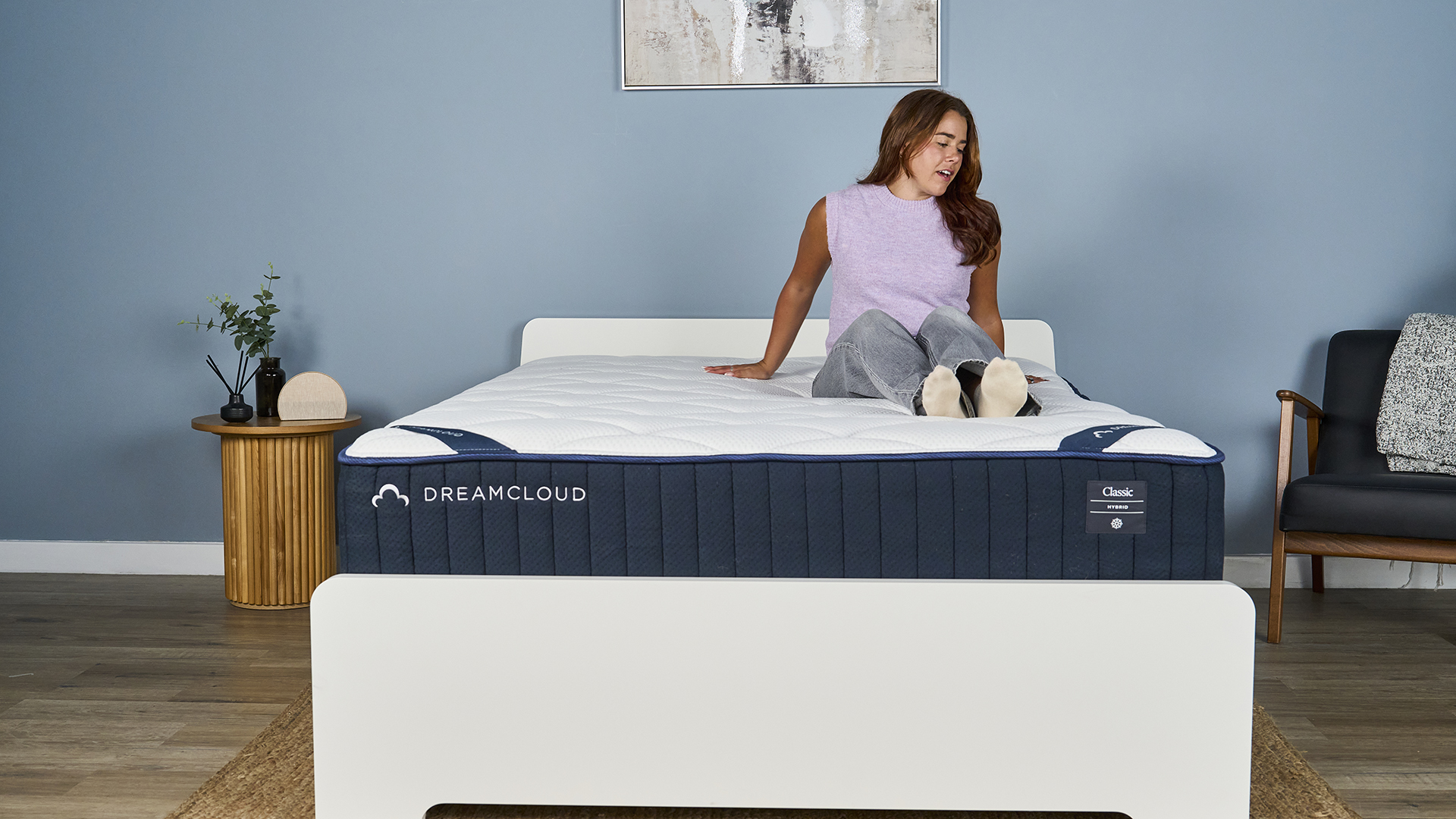
Weighted indentation and recovery test
Taking place in our sleep lab, this controlled test shows how a much a mattress sinks when a concentrated weight is placed on top of it, and how quickly it returns to its original height after the weight is removed. This test helps us record two key metrics:
Indentation depth: We place a 25kg weight (a third of the average adult body weight in America) in the area where a sleeper’s shoulders would usually go and record how far the mattress sinks (in inches) underneath the weight after 5 minutes — this is the Indentation Depth (ID).
Minimal sinkage means the mattress might push back too much against your body, leading to pressure points. Too much sinkage, where you keep sinking through the mattress without meeting any support layers, will cause misalignment of your spine and cause sore points.
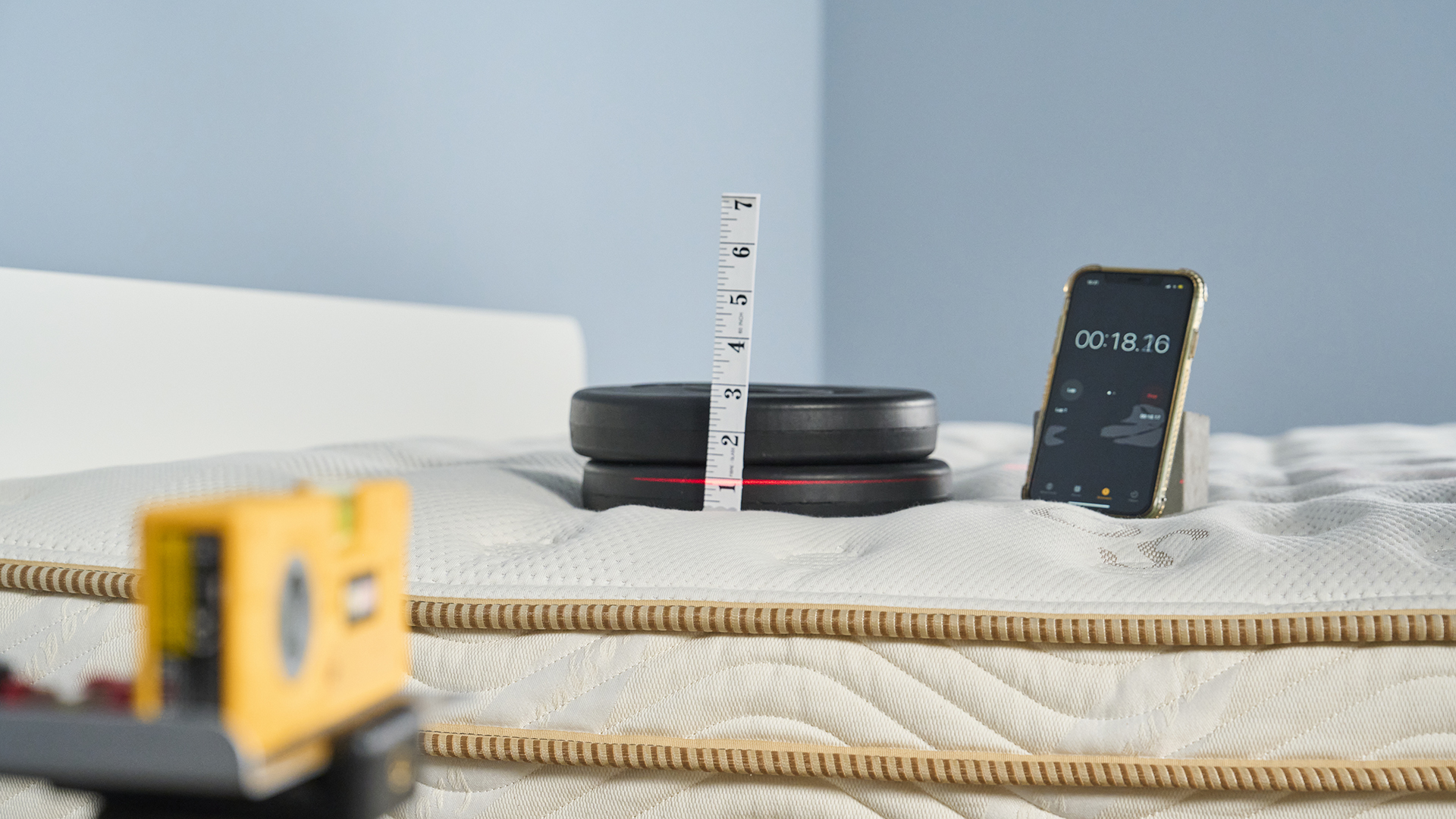
Recovery time: We remove the weight after five minutes to calculate the Recovery Time (RT). This is how long it takes in seconds for the mattress to bounce back to its original height.
The faster the recovery, the more responsive the mattress, and the easier it is to move around on. A slow recovery time isn't necessarily bad, but it does indicate that you might feel more 'stuck' in the mattress when changing position.
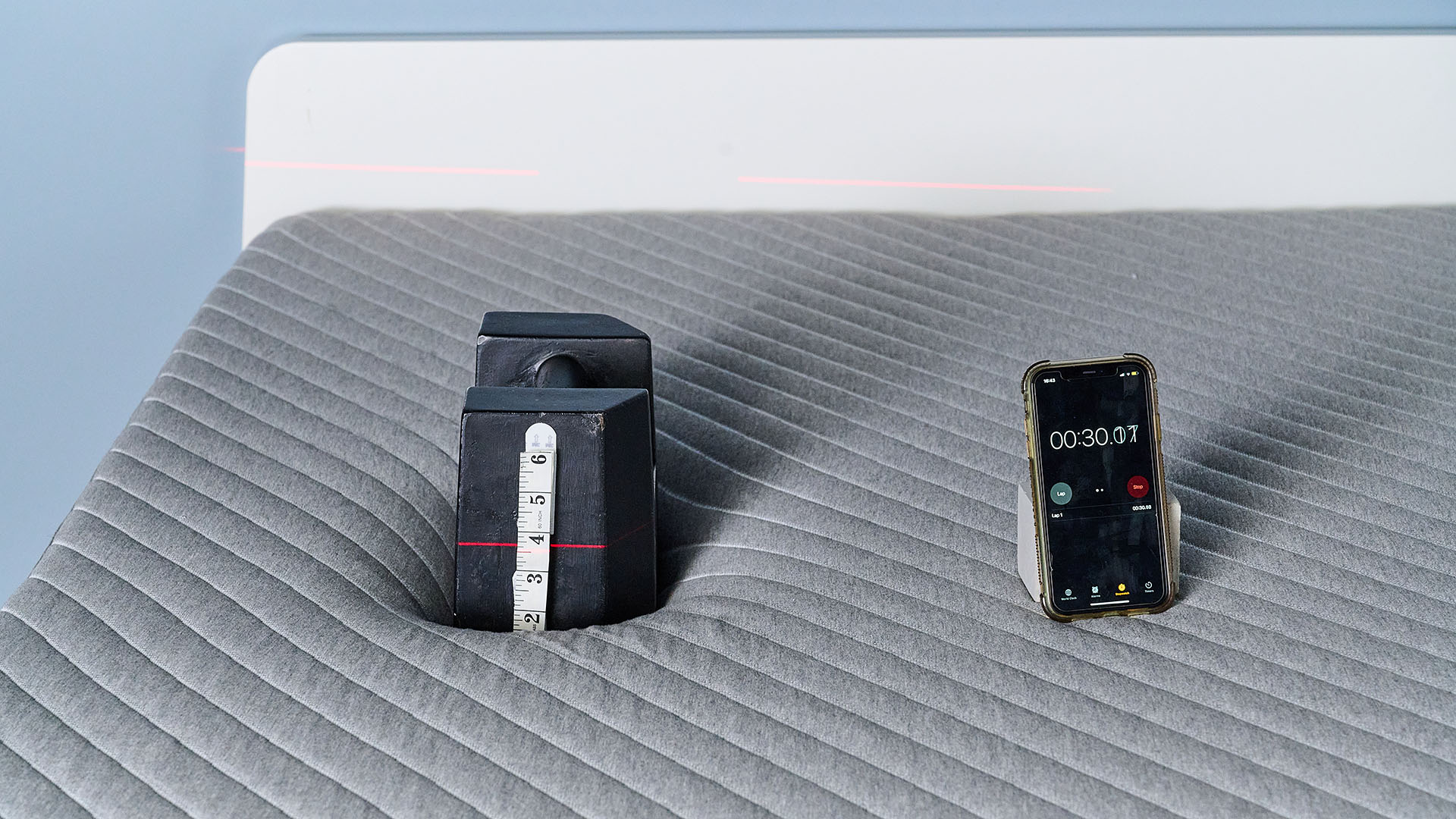
Spinal alignment assessment
What you might find super soft and cozy, someone else might find unsupportive and painful. For example, the best mattresses for heavy people have much firmer support than an average mattress and would likely lack the pressure relief needed for light weight sleepers.
When testing mattresses for pressure relief, we use a diverse testing panel made up of experts with varying body types and sleep preferences, including side, back and stomach sleepers.
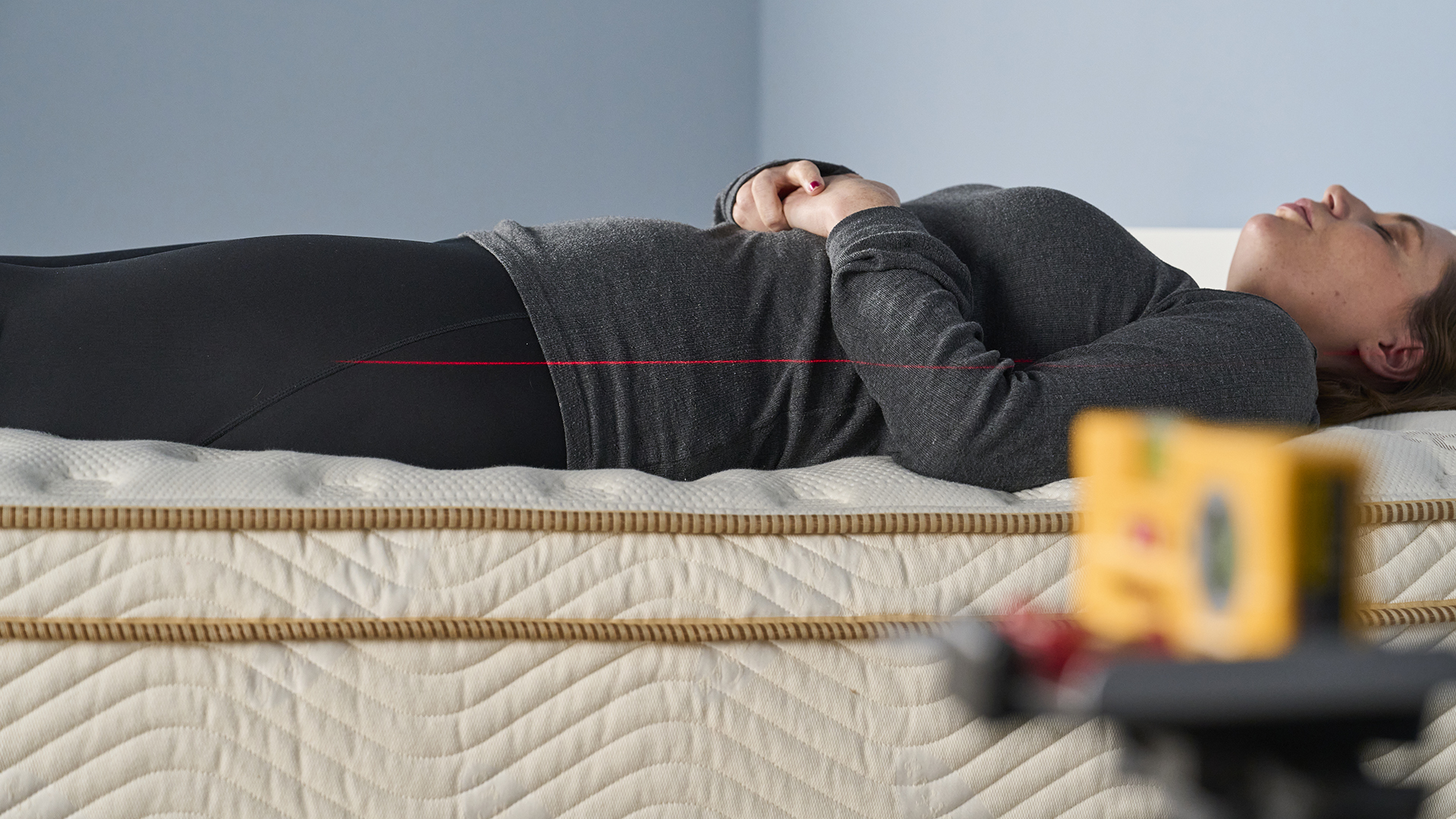
Each tester lies on the mattress for 10 minutes in every sleeping position (spending 10 minutes on their side, 10 minutes on their back, and so on), so that we can perform the following two tests:
Spinal alignment analysis: With Tester A lying on the mattress, Tester B then uses a laser level and tripod to observe the lying tester's spine as they lie in each sleeping position.
We can then more easily see if the mattress is keeping Tester A's spine in a neutral, straight line or if it is causing hamocking (sinking too deep) or bowing (arching unnaturally).
After 10 minutes, if the line is slanted, showing a curvature, this could indicate inadequate support.
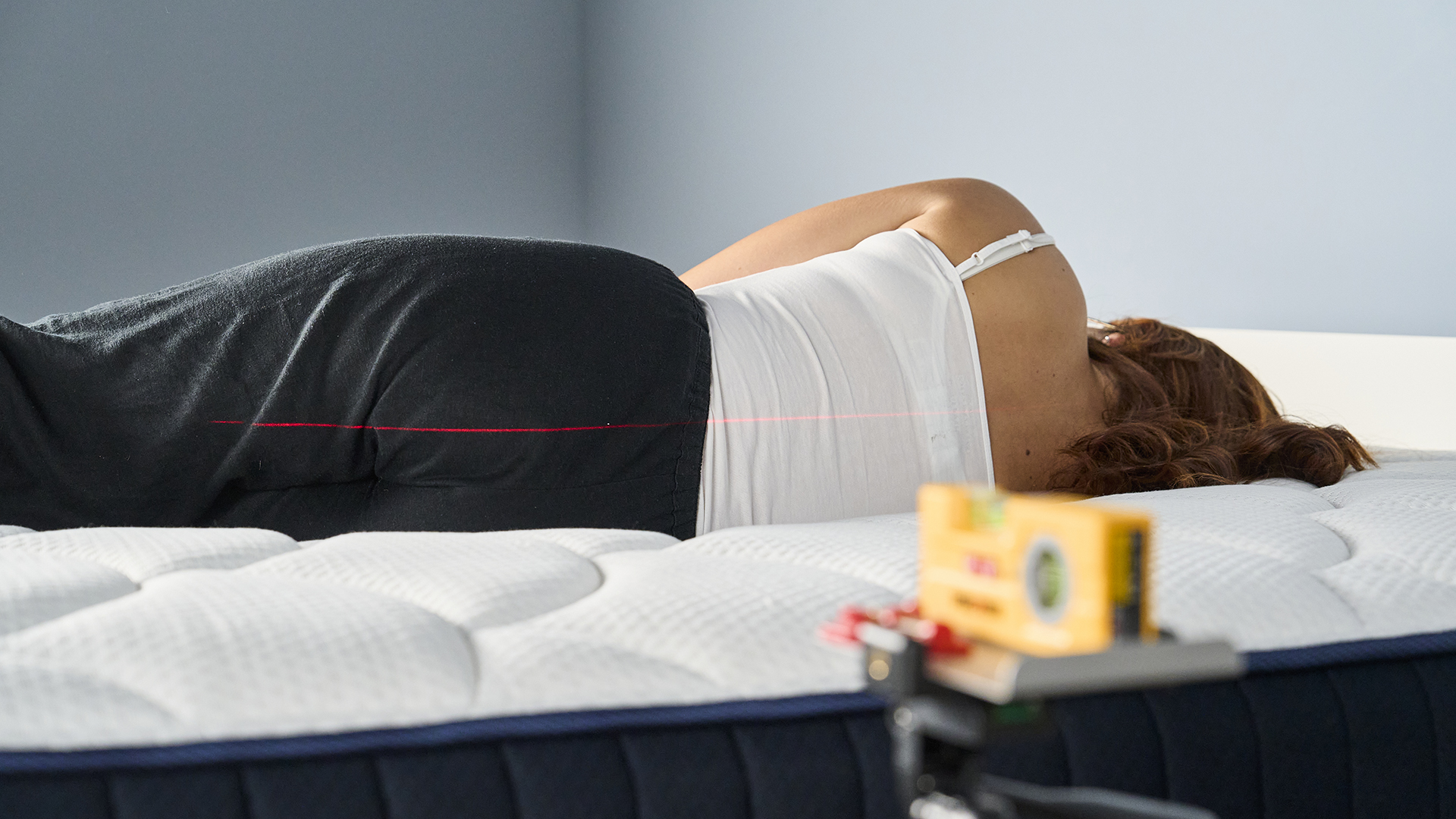
Pressure relief subjective feedback
After lying in each position for 10 minutes, Tester A fills out a standardized survey answering key questions about their experience of pressure relief on the mattress.
This includes answering questions about excess strain, and any felt pressure points or pain. We then ask them to award the mattress a score for how well it relieved any felt pressure.
Tester A and Tester B then switch roles, before we move onto the next pair of testers in our expert panel.
Combining both the subjective and objective score, we’re then able to award the mattress an overall score out of 5 for pressure relief.
How we test motion isolation
Motion isolation refers to how much movement travels across a mattress and how much motion is absorbed by the bed. The best memory foam mattresses we've tested excel at motion isolation because memory foam (originally developed by NASA) quickly absorbs high levels of impact and residual motion transfer.
Hybrid, late and traditional innerspring mattresses usually have higher levels of motion transfer because they are bouncier, springier beds by design. The upside is that these mattresses are much easier to move around, and are therefore better for sex.
The downside is that because they allow more motion to transfer from one side of the bed to the other, you will be more disturbed by your partner's movements on a hybrid, latex or innerspring mattress compared to a memory foam bed. However, some hybrid mattresses, like the Saatva Classic, are very good at motion isolation.
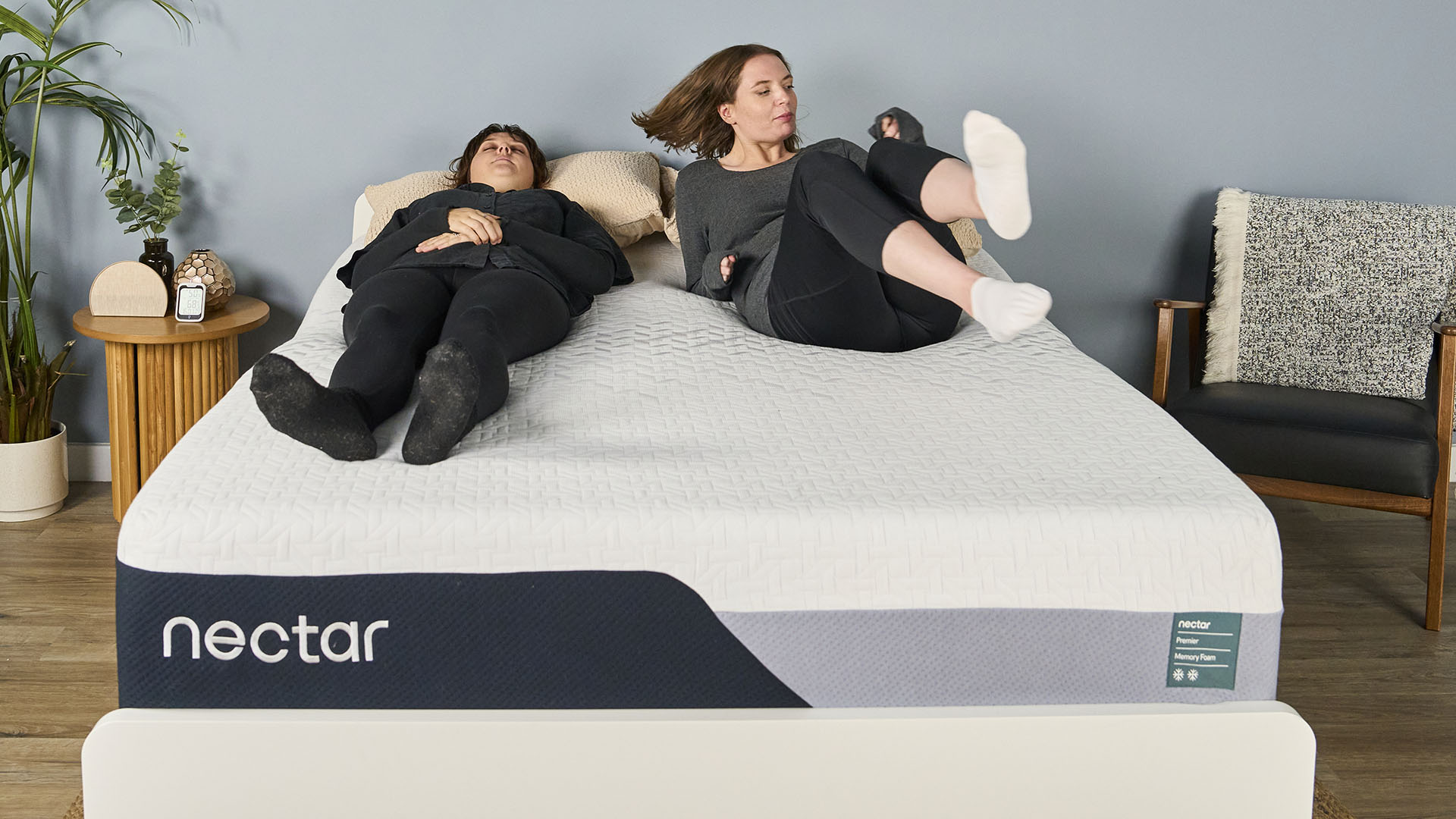
Motion isolation is an essential consideration, especially if you’re trying to find the best mattress for couples — it can be the difference between great sleep quality and a restless night full of disturbances.
The Siena Signature mattress has the most impressive motion isolation we’ve tested yet, withe mattress earning an impressive 4.5 out of 5.
These are the motion isolation tests we perform in our Sleep Product Testing Lab...
Slam ball and accelerometer test
While subjective feedback from our testing panel is an essential component of determining how well a mattress isolates motion, we've also devised an objective test to accurately compare the performance of mattresses we test.
To do this, we place a scientific accelerometer on one side of the mattress and drop a 5kg slam ball onto the other side.
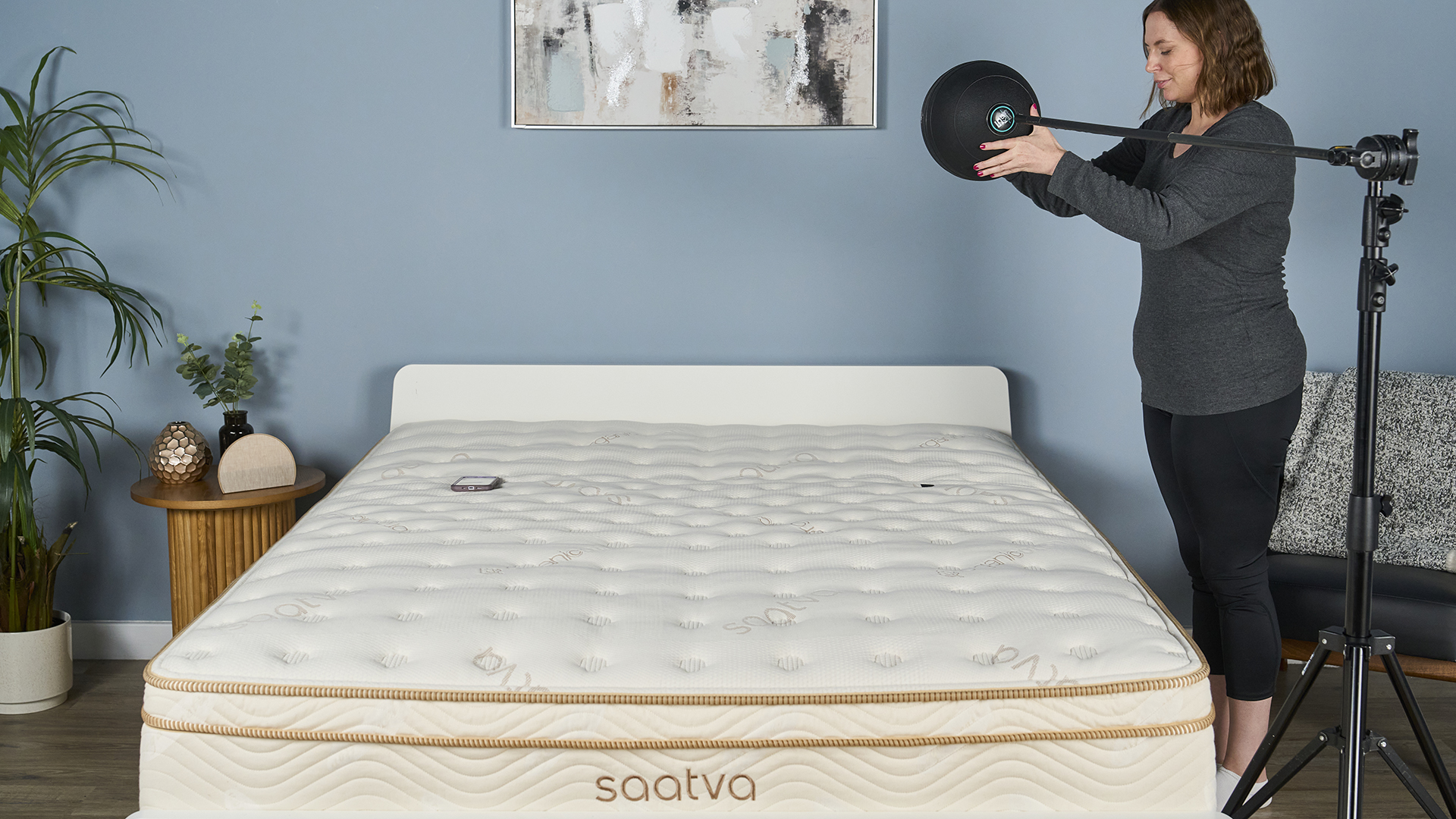
We then record two key measurements:
Initial Impact Absorption (IIA): This records the maximum acceleration of the mattress caused by the dropped ball (measured in m/s²). A lower spike means the mattress absorbed more motion instantly. A higher spike means less motion was absorbed.
Motion Dampening Speed (MDS): This measures the time (in seconds) it takes for the movement of the mattress to return to a stable, near-zero level. A shorter MDS means the mattress quickly deadens residual bounce. A longer MDS means residual motion is transferred for longer.

We then use this data to award an objective score for motion isolation. A higher IIA and MDS means that the mattress will isolate motion less effectively. So you might have a more disturbed night's sleep on this type of bed if you co-sleep with a restless partner, child or pet.
It doesn’t always lead to nighttime disturbances, however. Even though the DreamCloud Classic review found the mattress to transfer a lot of motion, it didn’t disturb our lead tester’s sleep.
Motion isolation co-sleeper test
In this part of our motion isolation test we ditch the 5kg slam ball and bring in our expert panel of mattress testers, as well as incorporating real-life feedback from the 3-week home testing period.
In our sleep lab, two testers lie on the mattress and manually perform movements classed as low, moderate and high force to replicate real-life scenarios.
For example, low force might be adjusting an arm or leg, while high force would be getting in and out of bed in a rush.

During this, the non-moving tester provides feedback on how much movement they can feel and how much they think it would disturb their rest.
The two testers then swap roles, repeating the test and at the end, fill out a survey about their experiences, scoring their perception of the mattress’ motion isolation.
In general, we expect even the best hybrid mattresses to perform slightly worse than memory foam beds, simply because of their construction — coils are much more responsive than foams.
How we test temperature regulation
Sleeping hot can be the result of a range of causes, both environmental and physical, and overheating often leads to disrupted sleep.
A mattress with good temperature regulation prevents heat build-up and dispels excess warmth to retain a neutral, or even cool, sleep environment.
The best cooling mattresses will offer active or passive cooling (or both), to ensure hot flashes, night sweats and warm summers don't ruin your sleep.
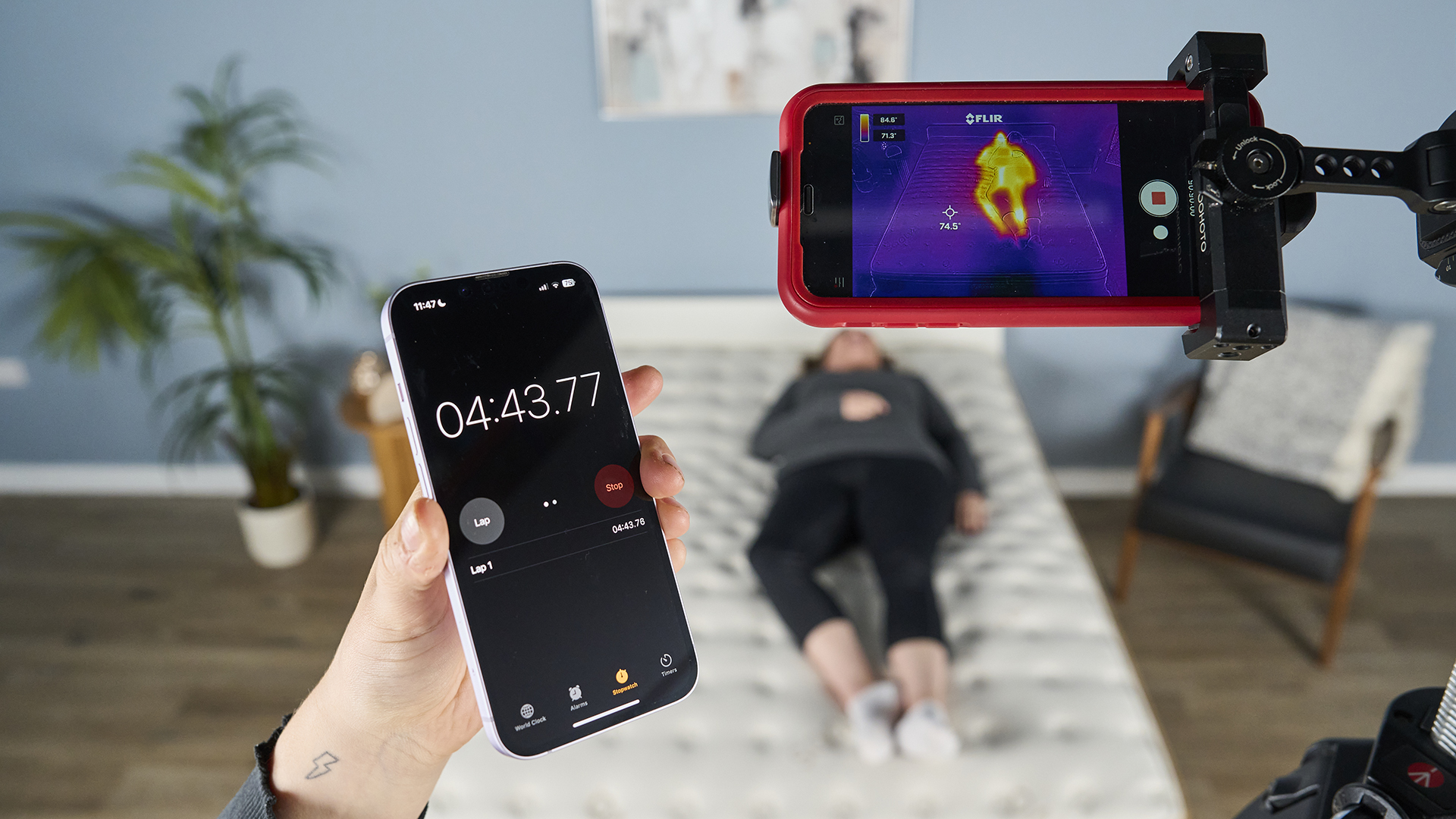
Heat absorption and dissipation test
Before the test takes place, we use a thermal imaging camera to record the temperature at six key points on the mattress: each of the four corners, the geometric center of the mattress and the geometric center of the tester's body (the hotspot.)
We also maintain a room temperature of approximately 66°F (the ideal temperature for sleeping) and measure the temperature and humidity throughout the testing period.
The objective thermal imaging test is divided into two parts, over the course of a 30 minute testing period.
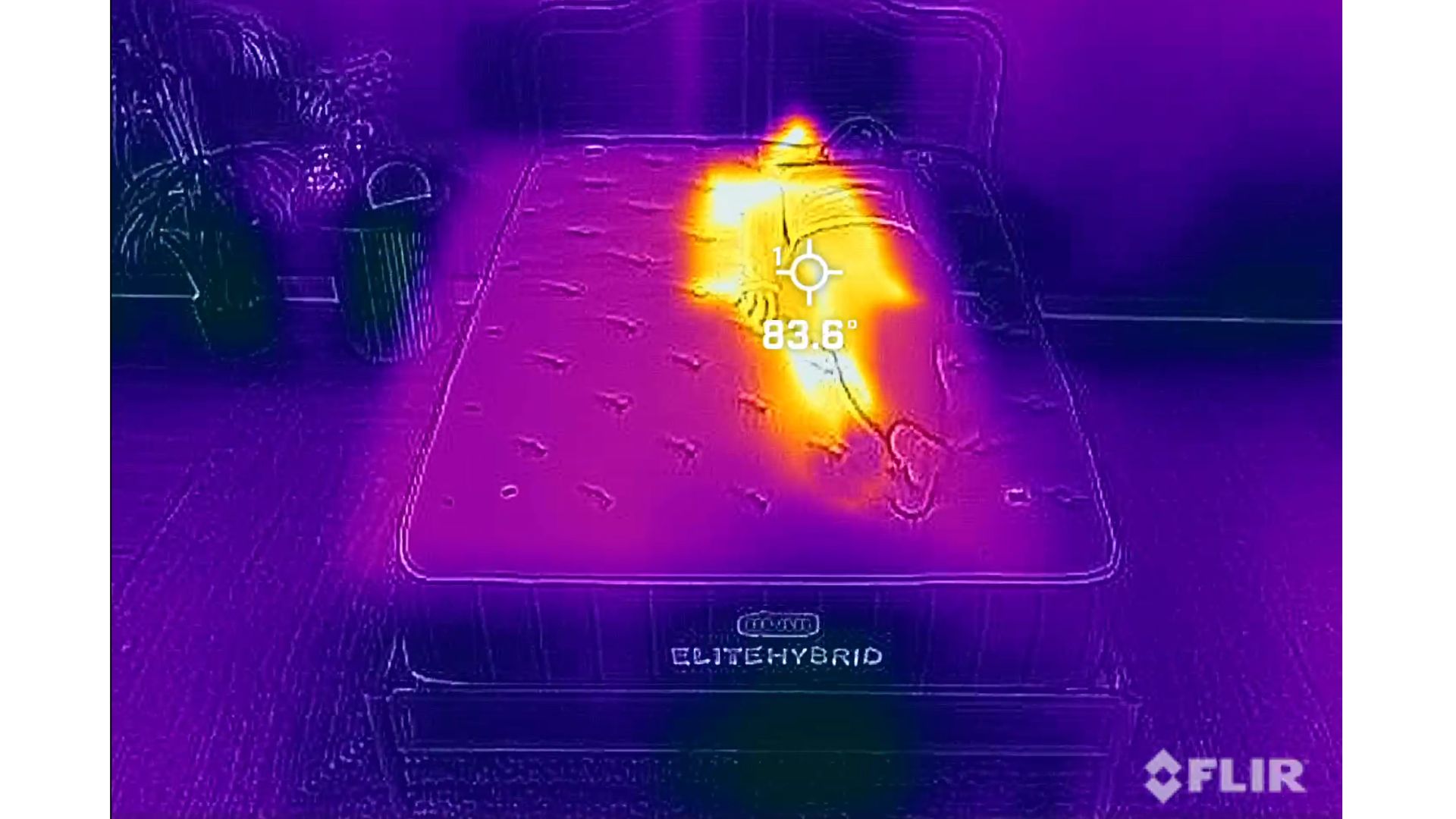
The initial testing phase measures how much heat the mattress absorbs when a person is on the bed. Our tester rests on the right side of the mattress for 15 minutes and, using the thermal camera, we measure the temperature at the six data points every minute.
This section measures the passive cooling; how well the mattress prevents heat build-up. The key metric is the MTI or Maximum Temperature Increase — the peak temperature the bed reaches.
Breathable mattresses are typically good in this area and prevent heat building up. During our Saatva Classic Mattress review, we were impressed with how this innerspring hybrid used multiple coil layers to ensure consistent air flow and an even feel.
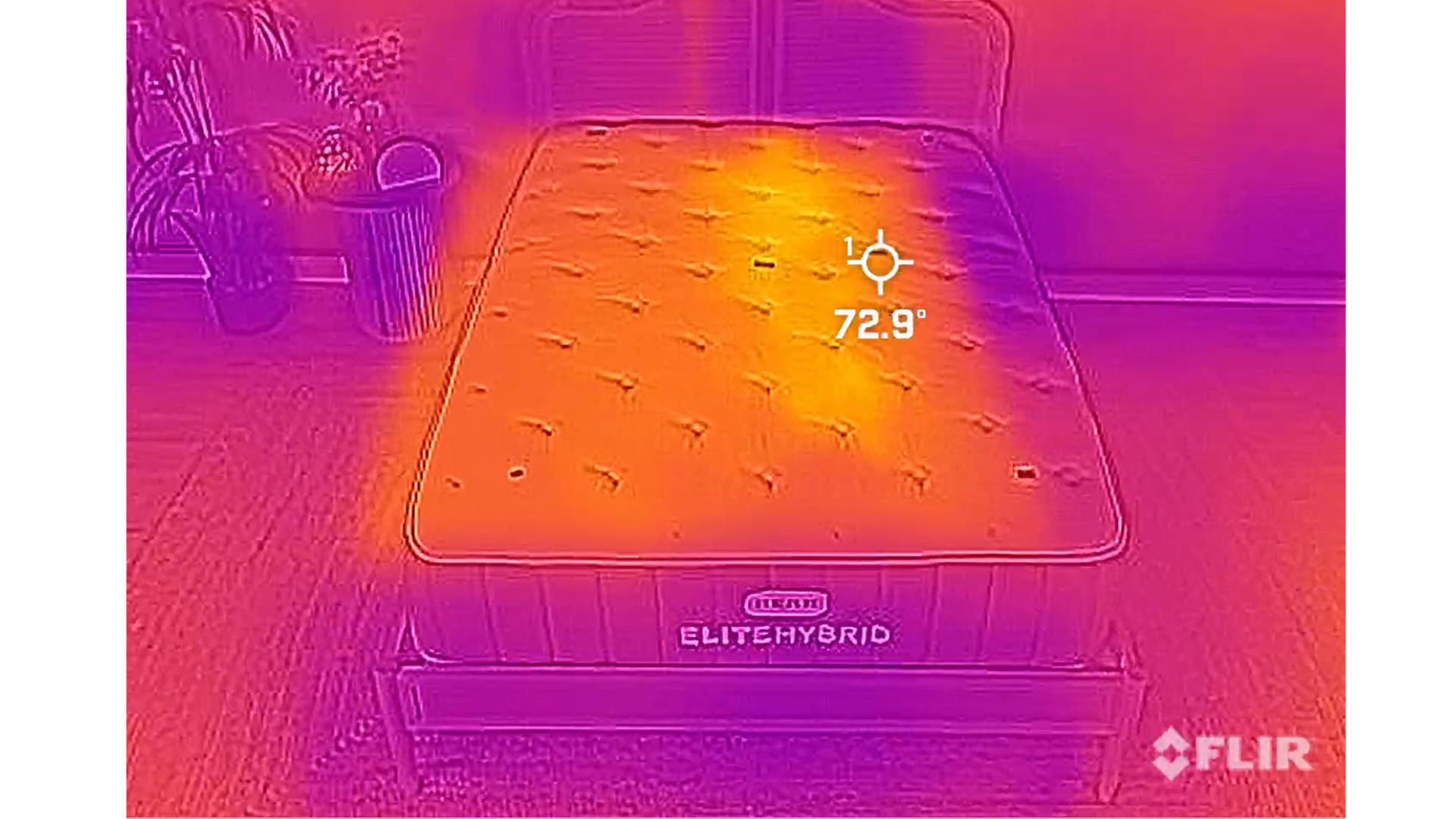
The secondary phase measures how quickly the mattress sheds (dissipates) heat once our tester has left the bed. We use our thermal camera to record the temperature at the data points once a minute, for 15 minutes.
This provides a Cooling Rate (CR), demonstrating how much heat the mattress offloads per minute. Mattresses with integrated cooling tech (such as PCM) often have quicker cooling rates, ensuring even a large heat build-up is quickly dissipated — we observed this during our Bear Elite Hybrid Mattress review.
Active cooling tends to be the realm of smart mattresses with integrated cooling materials. Nowadays, the best luxury mattresses are often infused with cooling upgrades such as PCM, GlacioTex, or graphite bands.
Passive cooling often results from a mattress with good airflow. The best passive cooling we've tested so far comes from the Saatva Classic mattress, which earned a 4.5 out of 5 score in our temperature regulation tests. This is typically found in hybrids, and tends to be a weak point of low-cost beds.
Temperature regulation subjective feedback
During our at-home testing period our reviewer keeps detailed notes on the mattresses thermal performance. This includes how it feels when first climbing into bed, any heat-related sleep disruption, and the mattress temperature in the morning.
We also note important external factors, including the temperature in the room, the bedding used and any lifestyle changes that might impact your body temperature.
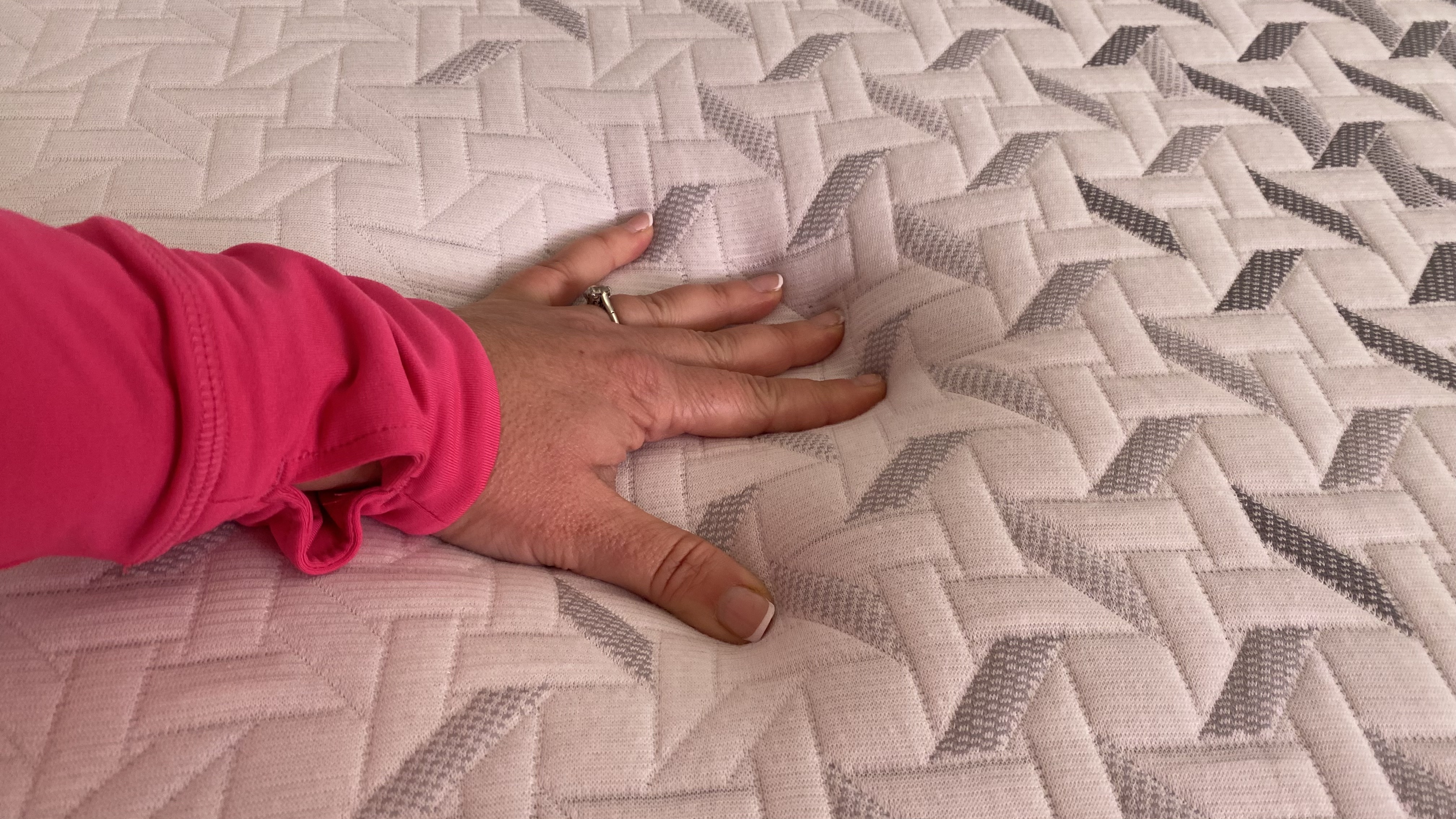
In addition to our lead tester, a series of secondary testers with different body types and sleep needs will use the bed for at least 15 minutes and provide details on their thermal experience.
Our subjective and objective tests are assessed in our scoring rubric to create an overall score out of 5. This helps us understand the temperature regulation for both chronic hot sleepers and those who experience sporadic warm nights.
A mattress with poor temperature regulation will allow heat to build, resulting in sweaty mornings or disrupted sleep.
Average to good temperature regulation means while your bed might not feel cool, it should rarely get hot. However, you might find on some occasions (heat waves, during illness, after a late meal, etc.) that your bed gets warm.
The mattresses that ace our temperature regulation should remain cool under most circumstances.
How we test edge support
A supportive edge maximizes the sleep surface of a mattress, giving couples space to get comfortable. Good edge support is also necessary to sit securely on the side of the mattress and it offers a stable base to press against when getting in and out of bed.
It also means you can sleep close to the side without worrying you'll roll off (the best mattresses for side sleepers will have strong edges, allowing for the starfishing that often occurs in this position.)
Body type and mobility level can impact how you experience edge support, which is why we combine our subjective testing with objective measurements.
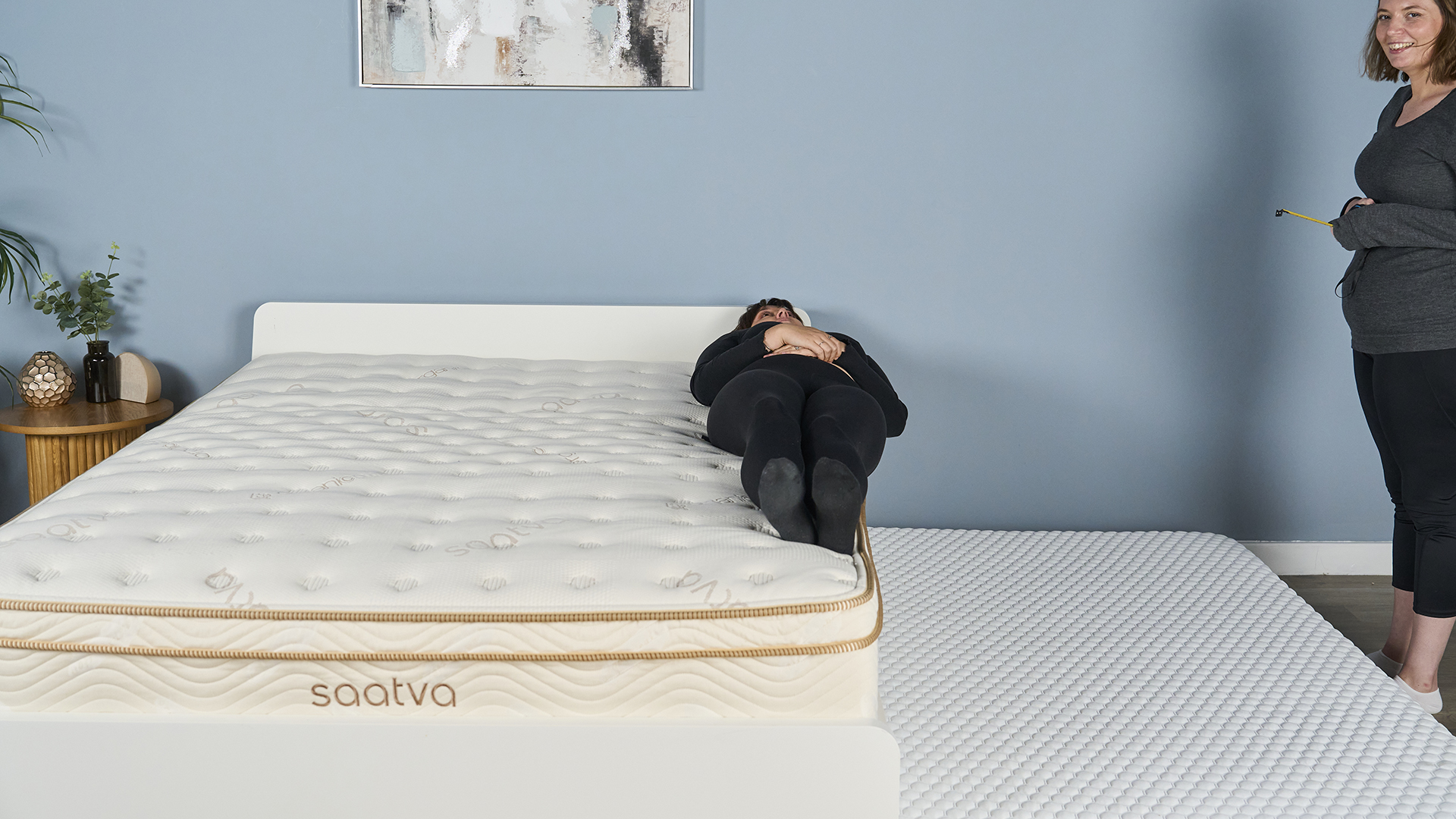
Weighted edge support test
We take a two-pronged approach to objective edge support testing, measuring support when sitting and lying on the mattress.
Sinkage: We place a 25kg weight in a standardized spot on one side of the mattress at a time, measuring 3" from the edge. Using a laser pen aimed at the surface of the mattress, we then measure the total sinkage of the weight into the bed after five minutes.
We then remove the weight and time the recovery; how long it takes for the materials to bounce-back. We repeat this test at the foot of the bed.

25kg is roughly equal to one-third the weight of the average American (84kg) and this concentrated pressure simulates a person sitting on the edge of a mattress.
A mattress with good edge support will typically show comparable sinkage at the perimeter of the mattress to the center, indicating you can sit anywhere on the bed.
We also shouldn't struggle to balance the weight — while the soft foams of the Zinus do have their benefits in terms of pressure relief, the trade off was the weight often slid off the side during our Zinus Green Tea Memory Foam Mattress review.
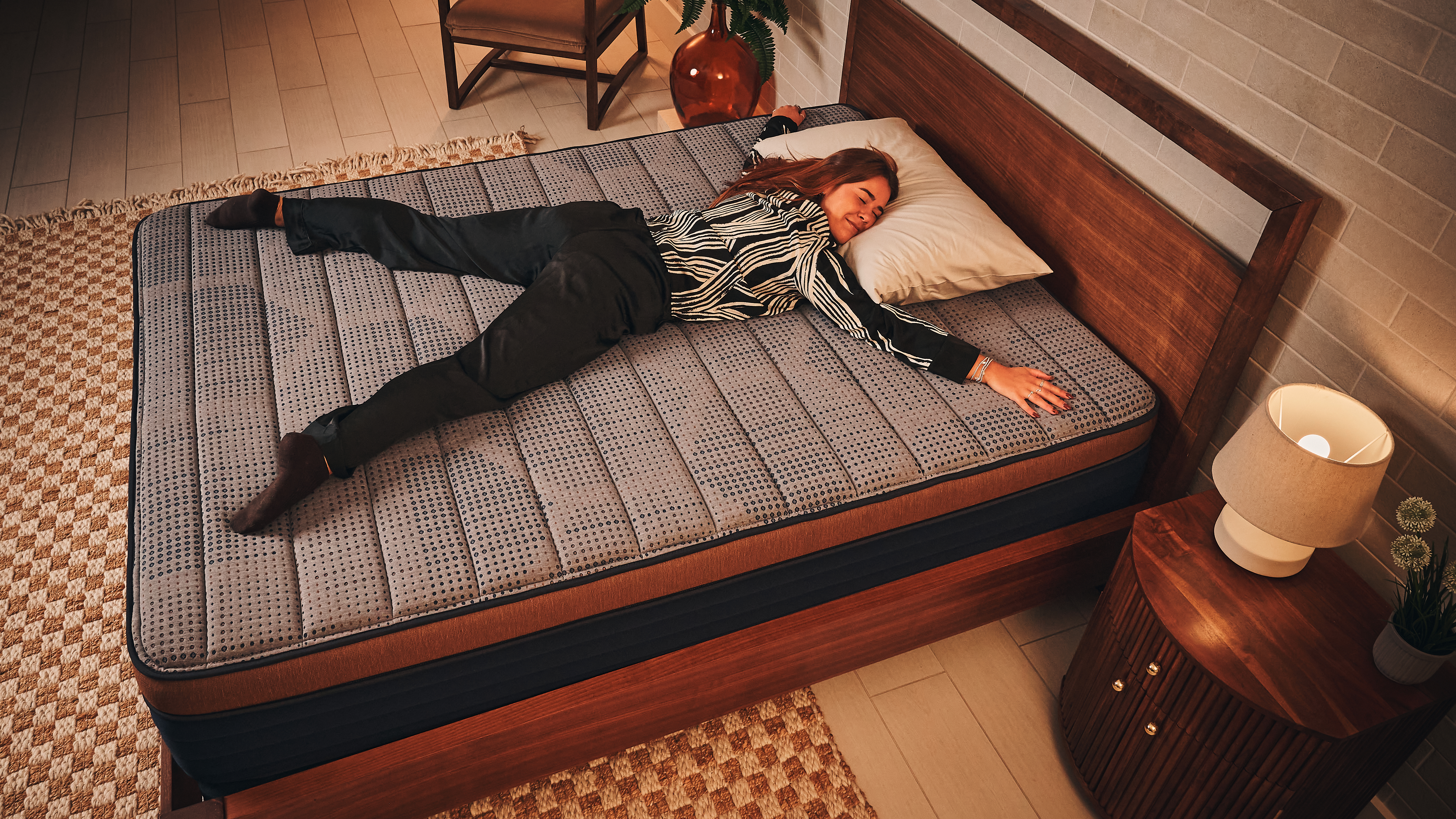
Effective sleeping area test
The big roll-off: To begin, we measure the width of our tester's hips. The tester then lies on the right hand side of the mattress, with their outer hip 12 inches from the edge. The tester moves gradually closer to the edge of the mattress, pausing between each movement.
When the tester feels they are no longer comfortably supported, they alert a secondary tester, who measures the distance from the left edge of the bed to the inner hip. This is used to find the effective sleep surface.
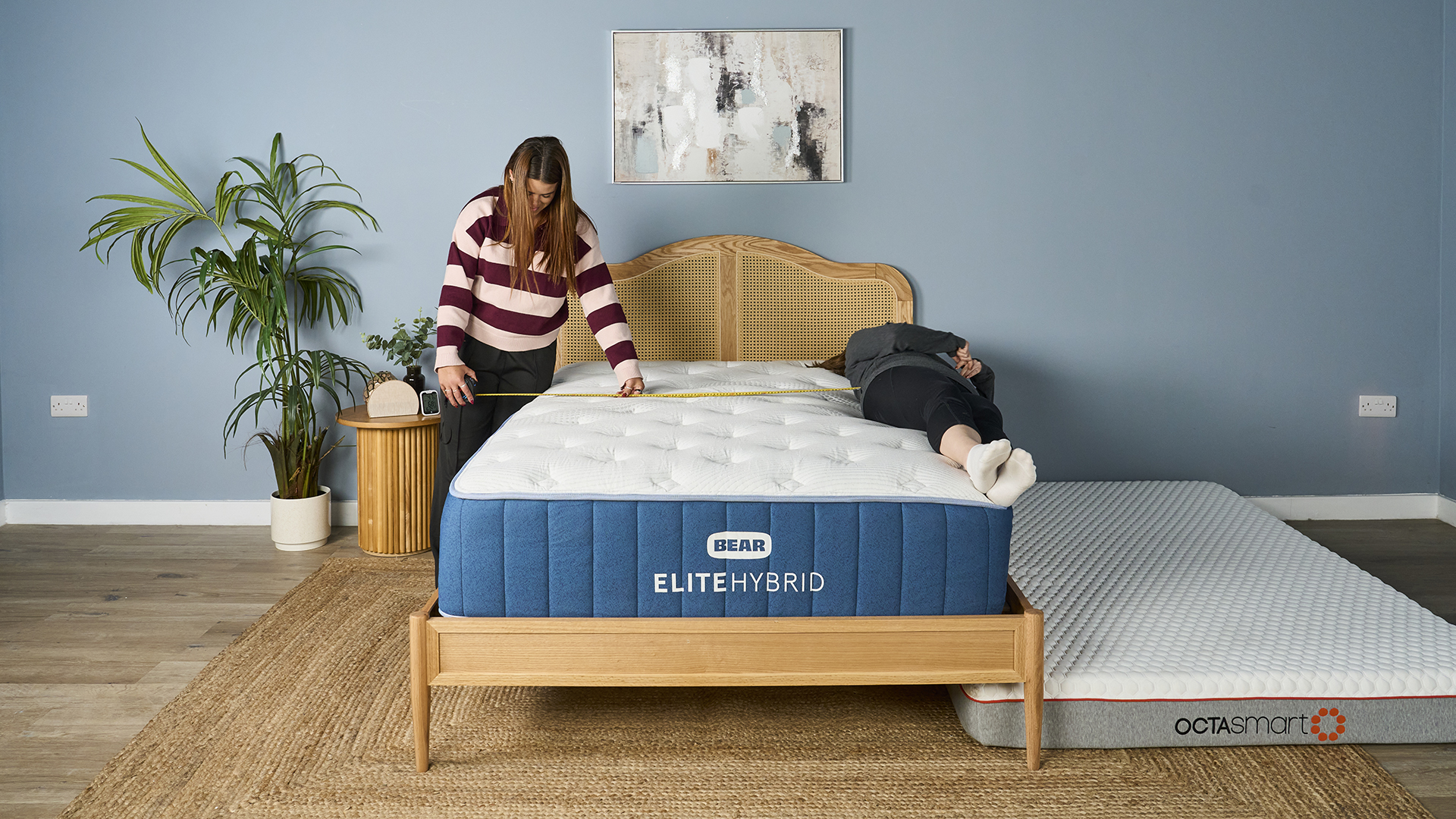
Lying on the edge of a mattress results in a wider weight distribution, which is why we use the secondary roll-off test to understand sleeping support.
Some mattress excel in one area of edge support over the other. For example, the Nectar Premier Memory Foam Mattress has dense foams to keep you supported when lying on the side but the softer comfort layers make sitting on the edge less secure.
These two objective tests are scored using our testing rubric and combined to create an overall objective view of edge support in a mattress.
Subjective edge support feedback
Using the mattress at home offers long-term insight into how edge support performs. During the review phase, our tester will naturally sit, lie and push against the side of the mattress.
In addition to our lead tester, we ask a review panel consisting of people from different weight brackets and with different mobility requirements to test out the edge support and complete feedback surveys.
The best firm mattresses typically excel at edge support and it's an area where hybrid mattresses tend to perform better than all-foam.
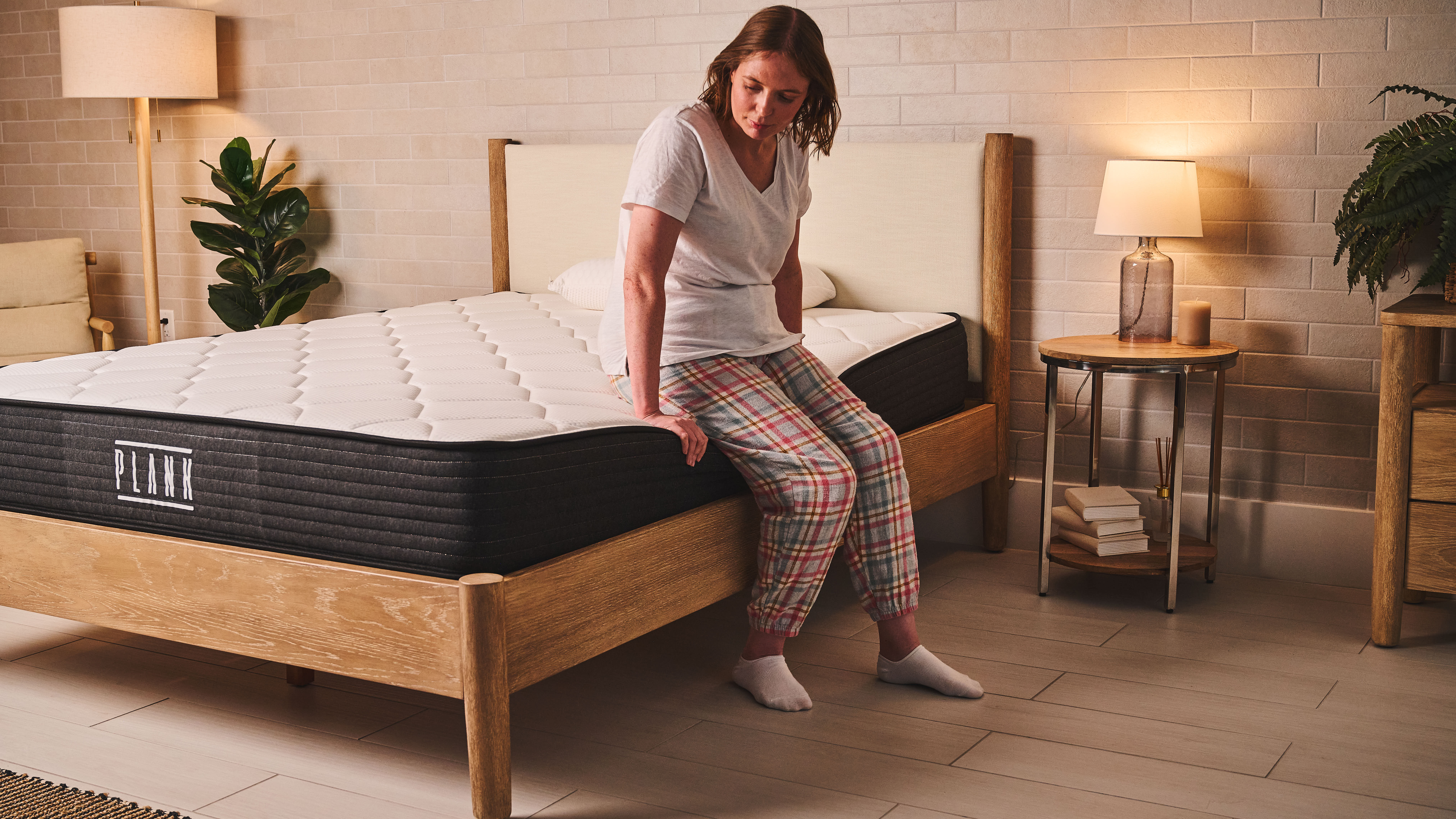
However, edge support is crucial to ensuring comfort when lying on a bed, which is why we expect passable edge support from all the beds in our guide to the best mattresses in a box.
Passable edge support means that while you can sit and lie close to edge without feeling like you'll fall, you might not feel comfortable in this position for an extended period of time.
The mattresses that excel here often have either a very firm build (such as the Plank Firm) or additional side support features (like the foam railings of the Saatva Classic.)
How we assess value for money
Our scoring rubric for value for money takes a specific set of criteria into account. This starts with the build quality (handcrafted versus machine-assembled) and finish, and the quality of the materials used to make it.
The mattresses that score well here are handmade, finished to an excellent standard, and are packed with premium natural and organic materials. Some or all of these materials will have special certifications such as GOTS. There will be little to no off-gassing either.
Mattresses that score low here are machine assembled, lack even basic certifications such as certiPUR-US foam, have a pungent off-gassing smell, and poor build quality.
Expert analysis of the build quality, materials and construction of the mattress also give us a thorough indication of durability and longevity. In other words, how long we expect this mattress to last – a crucial consideration when assessing longterm value for money.
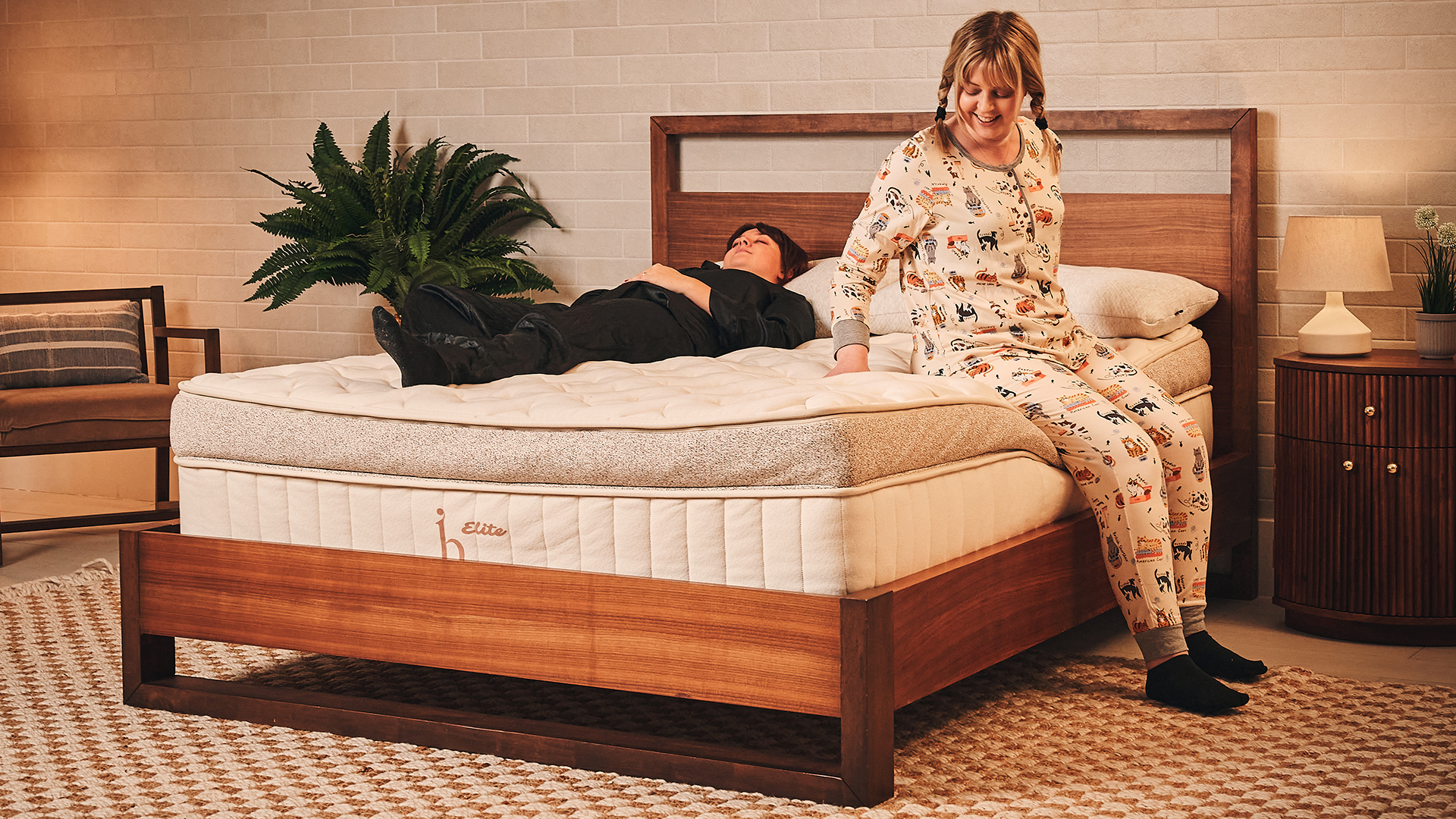
We also consider the price of the mattress versus its performance in our testing, how that price of the mattress compares to rivals, and whether it's regularly discounted or always sold at full price.
The last component of our value for money scoring rubric is benefits: the sleep trial, type and length of warranty, and the type of shipping the mattress comes with. Mattresses with generous sleep trials of 100 nights or more, 15+ year warranties, and free shipping to your door score well here.
The best are those mattresses that come with a year's trial, so you can test the bed at home through every season, a lifetime warranty, and free White Glove Delivery (free installation of your new mattress and removal of your old bed).
How we score mattresses
A new methodology calls for a new mattress scoring system. We’ve devised all-new scoring rubrics for pressure relief, temperature regulation, motion isolation, edge support, and value for money.
Every mattress we test under our new methodology is scored out of 5 in each of these areas, so the maximum score a mattress can earn is 25 out of 25.
So far, only one mattress has come close to a perfect score and that’s the Saatva Classic with a score of 24 out of 25.
When then convert that score out of 25 into an overall star rating as follows:
Test score out of 25 | Star rating | Description | What it means |
23-25 | 5 stars | Best in class | Absolute best example of a mattress. For most people, you won't find better. |
18-22 | 4 stars | Excellent | Brilliant all-rounder for most people, with only minor faults or value for money niggles. Lacks the polish of the absolute best-in-class mattresses. |
14-17 | 3 stars | Good | Generally performed well in our tests. Good option for the money, but you will make some sacrifices in terms of support, cooling or comfort. |
10-13 | 2 stars | Mediocre | Acceptable in some areas, but underperforming in others. Not good value for money. You can do better. |
9 or under | 1 stars | Poor | Performed badly in most tests. Not good value for money. We do not recommend this mattress. |
How a mattress performs in our tests, and how we score the mattress, has a huge impact on our overall mattress rankings.
Only the top-performing options are selected for our various buyer’s guides, with the absolute cream of the crop ranked in our main best mattress guide.

Claire is a Certified Sleep Science Coach and the Senior Sleep Editor at Tom's Guide who curates our mattress buying guides and oversees our rigorous mattress testing procedures. Claire has over 16 years’ product review experience and is connected to a wealth of globally renowned sleep experts including mattress designers and buyers, neuroscientists, and doctors of sleep medicine. As the Managing Editor of our Sleep and Mattress Team, Claire is responsible for all mattress and sleep content published on Tom’s Guide and is our expert on Saatva, DreamCloud, and Nectar mattresses. Claire is also certified to advise people on how to choose a mattress that suits their needs and budget, as well as helping them to create a nighttime routine and bedroom environment that helps them sleep better.
You must confirm your public display name before commenting
Please logout and then login again, you will then be prompted to enter your display name.
